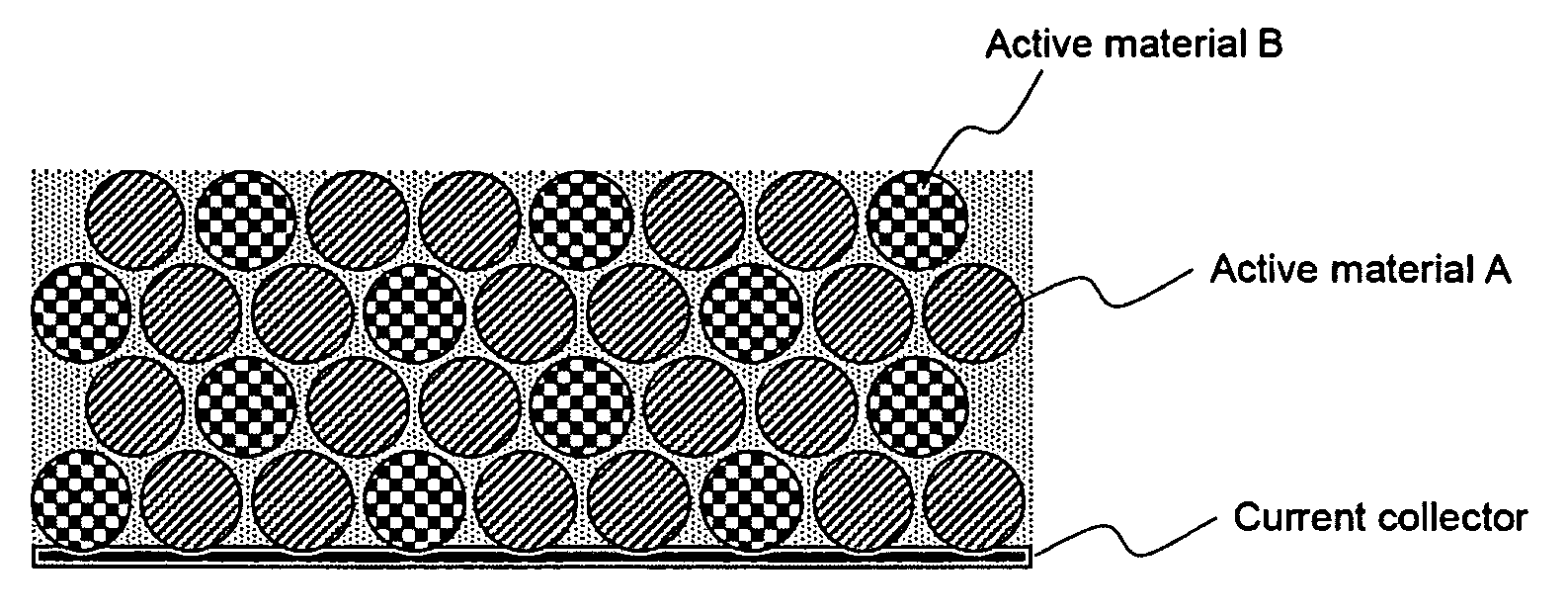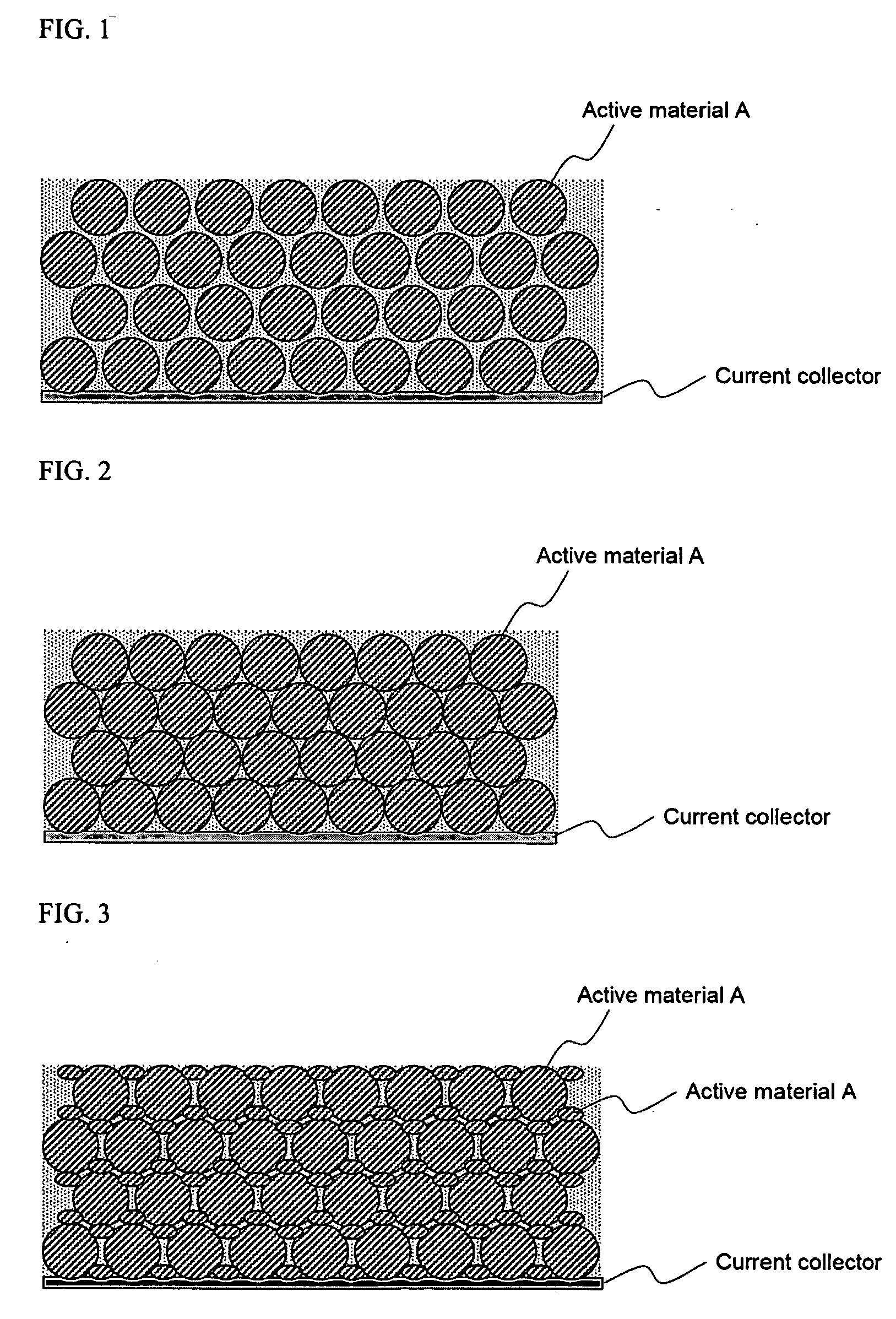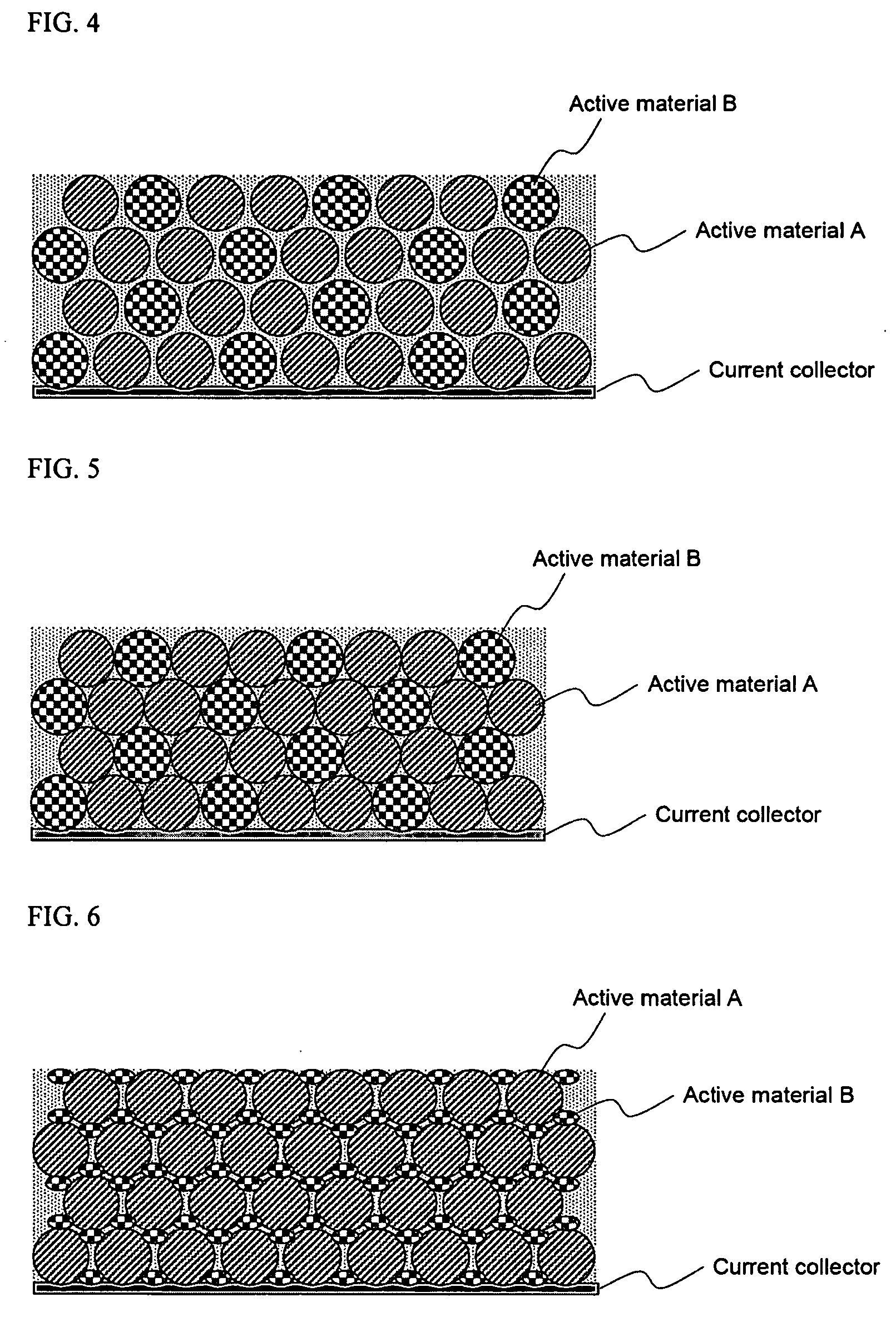Secondary battery of improved lithium ion mobility and cell capacity
a lithium ion and mobility technology, applied in the direction of positive electrodes, cell components, electrochemical generators, etc., can solve the problems of rapid decrease in c-rate, excessive decrease of electrode porosity, deterioration of c-rate characteristics of battery cells, etc., to improve discharge characteristics, increase cell capacity, and increase electrode density and loading amount
- Summary
- Abstract
- Description
- Claims
- Application Information
AI Technical Summary
Benefits of technology
Problems solved by technology
Method used
Image
Examples
example 1
[0104] 2.5 g of an active material, which was composed of a mixture of LiCoO2 having an average particle size of 20 μm and LiNi1 / 3Mn1 / 3Co1 / 3O2 having an average particle size of 5 μm in a weight ratio of 9:1, was placed in a cylindrical mold having a diameter of 1.5 cm and was pressurized under pressure of 4000 psi for 5 min. Thereafter, the thickness of the mold filled with the active material and the initial thickness of the empty mold prior to introduction of the active material were respectively determined, thereby calculating the thickness of the molded active material. In addition, taking into account when a ratio of the active material, a conductive material and a binder was 95:2.5:2.5, based on this calculation result, an electrode density and changes of voids in an actual electrode were calculated. The experimental results thus obtained are given in Table 1 below.
example 2
[0105] An experiment was carried out in the same manner as in Example 1, except that 2.5 g of an active material composed of LiCoO2 having an average particle size of 20 μm and LiNi1 / 3Mn1 / 3Co1 / 3O2 having an average particle size of 5 μm in a weight ratio of 8.5:1.5 was added. The experimental results thus obtained are given in Table 1 below.
example 3
[0106] An experiment was carried out in the same manner as in Example 1, except that 2.5 g of an active material composed of LiCoO2 having an average particle size of 20 μm and LiNi1 / 3Mn1 / 3Co1 / 3O2 having an average particle size of 5 μm in a weight ratio of 8:2 was added. The experimental results thus obtained are given in Table 1 below.
PUM
| Property | Measurement | Unit |
|---|---|---|
| electric potential | aaaaa | aaaaa |
| electric potential | aaaaa | aaaaa |
| porosity | aaaaa | aaaaa |
Abstract
Description
Claims
Application Information
 Login to View More
Login to View More - R&D
- Intellectual Property
- Life Sciences
- Materials
- Tech Scout
- Unparalleled Data Quality
- Higher Quality Content
- 60% Fewer Hallucinations
Browse by: Latest US Patents, China's latest patents, Technical Efficacy Thesaurus, Application Domain, Technology Topic, Popular Technical Reports.
© 2025 PatSnap. All rights reserved.Legal|Privacy policy|Modern Slavery Act Transparency Statement|Sitemap|About US| Contact US: help@patsnap.com



